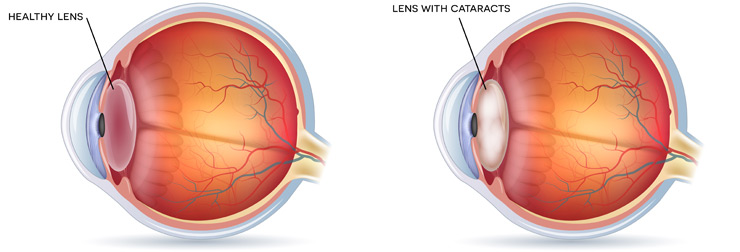What is a Cataract?
A cataract is the clouding
of the crystalline lens in your eye. This opacity obstructs the
passage of light resulting in a reduction of clear vision.
Normally, light passes through the clear lens and is focused
onto the Retina. However, the natural aging process can cause
the lens to become cloudy, or milky. The cataract blocks the
passage of light through the eye and causes distorted or blurred
vision, glare, or difficulty seeing in poor lighting conditions.

There are three
types of cataracts:
» A nuclear cataract forms in the lens. Those over 65 are more
prone to develop this type of cataract. More than half of all
Americans over the age of 65 will develop a cataract.
» A cortical cataract forms in the lens, then grows from the
outside to the center of the lens. Diabetics are more prone to
develop this type of cataract.
» A subcapsular cataract forms in the back of the lens. Those
with diabetes, high hyperopia (Far-sightedness) or retinitis
pigmentosa may be at a higher risk to develop this type of
cataract.
It is not known
why cataracts occur in all instances but studies on the cause of
cataracts will soon teach us how to more successfully treat and
prevent them. The most commonly known type of cataract is age
related.
You may not notice a slight change in your vision, as cataract
starts out very tiny, but as it grows from the size of a pin
head, you may notice that your vision is becoming blurry, and
you may feel you are looking through dirty lenses. Object edges
may appear to fade into one another and colors may not appear as
bright as they should.
The most common
symptoms of a cataract are:
» Cloudy or blurry vision.
» Problems with light.
» Problems with headlights that seem too bright.
» Problems with glare from lamps.
» Problems with very bright sunlight.
» Colors that seem faded.
» Poor night vision.
» Double or multiple vision.
» Frequent changes in glasses or contact lenses.
» Eyeglasses are no longer effective.
» Contact lenses are no longer effective.